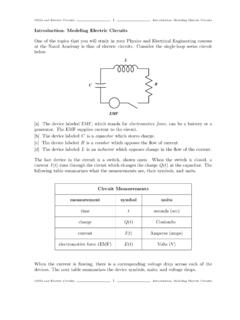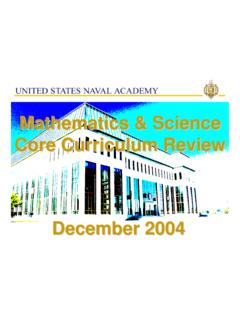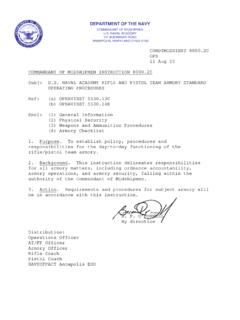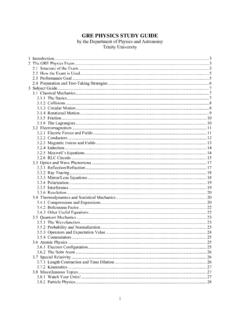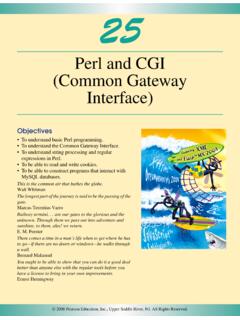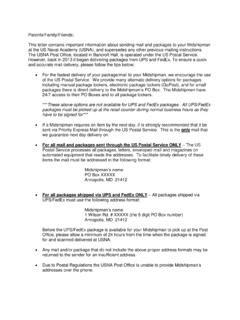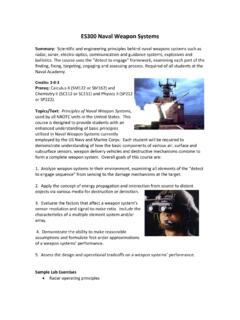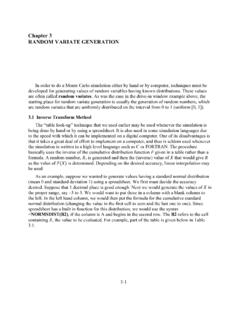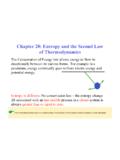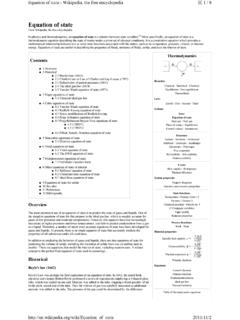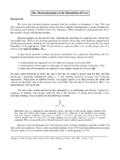Transcription of SC151 chap 10 learning objectives f17 - USNA
1 SC151 - CHAPTER 10 learning objectives To satisfy the minimum requirements for this course, you should master the following learning objectives . Understand and be able to use the terms spontaneous reaction, and nonspontaneous reaction. Review and understand the first law of thermodynamics. Describe how entropy is related to randomness/disorder or dispersal of energy, and be able to relate the number of microstates for a chemical system to the entropy of the system. predict whether the sign of S is positive, negative, or near zero for a chemical or physical change. describe how and why the entropy of a substance changes with temperature or when a phase change occurs. calculate S for any reaction from tabulated absolute entropy values, S . Know the second law of thermodynamics and explain the role that entropy plays in determining whether a process will be spontaneous.
2 Know the third law of thermodynamics and explain why it s needed to calculate absolute entropies. Know the definition of standard state for elements, solids, liquids, gases and solutes in solution. Calculate the standard free-energy change, G , at 25 oC from standard free energies of formation. Explain the relationship between the sign of the free-energy change, G, and whether a process is spontaneous in the forward direction. Predict how G will change with temperature, given the signs for H and S. Use the equation G = H T S to calculate the free energy change for a reaction and to determine the temperature at which a nonspontaneous reaction becomes spontaneous. Understand the relationship between G and K and be able to calculate G from K and perform the reverse operation. explain how G differs from G and discuss how G changes during the course of a reaction.
3 Calculate the free-energy G for given reaction concentrations. Qualitatively understand the relationship between free energy, useful work, enthalpy and entropy.
